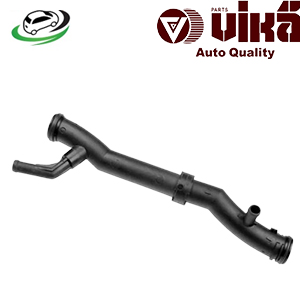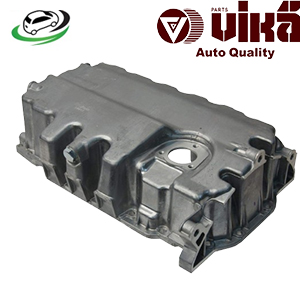-5%
Get AUDI A1 (8X1 8XK)/ A3 (8P1)/ A3 Sportback (8PA) / VW Polo V (6R1 6C1)/ Touran (1T3)/ Polo Van (6R)/ Golf VI (5K1) Thermostat Assembly 03F121111A
The thermostat assembly is a crucial component of an automobile’s cooling system, playing a vital role in regulating engine temperature. By controlling the flow of coolant between the engine and the radiator, the thermostat helps maintain optimal operating temperatures, ensuring efficient performance and preventing overheating. This comprehensive guide will explore the function of the thermostat assembly, its importance, types, common issues, maintenance practices, and its overall impact on vehicle performance.
1. What is a Thermostat Assembly?
A thermostat assembly consists of a thermostatic valve and housing that regulates the flow of coolant in an engine cooling system. It is designed to open and close at specific temperatures, allowing coolant to circulate between the engine and radiator. The thermostat is typically made from metal and features a wax-filled capsule that expands or contracts based on temperature changes.
2. Function of the Thermostat Assembly
A. Regulating Engine Temperature
The primary function of the thermostat assembly is to regulate the engine’s temperature by controlling coolant flow. When the engine is cold, the thermostat remains closed, preventing coolant from entering the radiator. This allows the engine to heat up quickly. Once the engine reaches its optimal operating temperature (usually between 195°F and 220°F), the thermostat opens, allowing coolant to flow to the radiator for cooling.
B. Preventing Overheating
By controlling the flow of coolant, the thermostat assembly prevents the engine from overheating. If the engine temperature exceeds safe limits, the thermostat opens to allow more coolant to flow to the radiator, where it can dissipate heat. This process helps protect the engine from damage caused by excessive heat.
C. Improving Fuel Efficiency
Maintaining an optimal engine temperature is crucial for fuel efficiency. An engine that runs too cold may consume more fuel as it struggles to reach the ideal temperature. Conversely, an engine that runs too hot can lead to performance issues and decreased efficiency. By regulating coolant flow, the thermostat assembly helps ensure the engine operates within its designed temperature range, improving overall fuel efficiency.
D. Supporting Emission Control
Modern vehicles are equipped with advanced emission control systems that require precise engine temperature management. The thermostat assembly helps maintain the ideal temperature for combustion, reducing harmful emissions and ensuring compliance with environmental regulations.
3. Importance of the Thermostat Assembly
A. Engine Longevity
A properly functioning thermostat assembly is critical for extending engine life. Overheating can lead to severe damage, including warped cylinder heads, blown gaskets, and engine seizure. By maintaining optimal operating temperatures, the thermostat assembly helps prevent these costly issues, ultimately enhancing engine longevity.
B. Enhancing Performance
An engine that operates within its ideal temperature range performs better, resulting in improved acceleration, responsiveness, and power output. The thermostat assembly plays a crucial role in ensuring the engine reaches and maintains these optimal temperatures, contributing to overall performance.
C. Supporting Vehicle Safety
Overheating can pose serious safety risks, potentially leading to engine failure or fire. A malfunctioning thermostat assembly can result in catastrophic overheating situations. Properly maintaining the thermostat helps mitigate these risks, enhancing vehicle safety.
D. Improving Cabin Comfort
The thermostat assembly also influences the vehicle’s heating system. By regulating coolant flow to the heater core, it enables the vehicle’s heating system to function effectively, providing warmth to passengers during colder months.
4. Types of Thermostat Assemblies
A. Mechanical Thermostats
Mechanical thermostats are the most common type found in vehicles. They utilize a wax-filled capsule that expands and contracts based on temperature changes. As the engine heats up, the wax expands, pushing a piston that opens the thermostat. When the engine cools, the wax contracts, closing the thermostat. This simple design is reliable and effective for regulating coolant flow.
B. Electronic Thermostats
Electronic thermostats are becoming increasingly popular in modern vehicles. These thermostats use sensors and electronic controls to regulate coolant flow more precisely. By continuously monitoring engine temperature and other parameters, electronic thermostats can adjust their operation for optimal performance and fuel efficiency. They are often found in hybrid and electric vehicles, where temperature management is critical for battery performance.
C. Bypass Thermostats
Bypass thermostats are designed to allow a portion of the coolant to bypass the radiator when the engine is cold. This feature helps the engine warm up more quickly by ensuring that some coolant circulates while the thermostat is closed. Bypass thermostats are typically used in conjunction with standard mechanical or electronic thermostats.
5. Common Issues with Thermostat Assemblies
A. Stuck Open
A thermostat that is stuck open allows coolant to flow continuously to the radiator, preventing the engine from reaching its optimal operating temperature. This can result in poor fuel efficiency, reduced performance, and increased emissions. Symptoms of a stuck-open thermostat include a low temperature reading on the gauge and poor cabin heat.
B. Stuck Closed
A thermostat that is stuck closed prevents coolant from flowing to the radiator, leading to overheating. This situation can cause severe engine damage if not addressed promptly. Symptoms of a stuck-closed thermostat include high temperature readings on the gauge, steam coming from the engine, and warning lights indicating overheating.
C. Inconsistent Operation
A thermostat that operates inconsistently may open and close at inappropriate temperatures, leading to fluctuating engine temperatures. This can cause performance issues, increased emissions, and reduced fuel efficiency. Symptoms may include erratic temperature gauge readings and varying cabin heat levels.
D. Leaks
The thermostat housing can develop leaks due to age, wear, or damage. A leaking thermostat assembly can lead to coolant loss, which may result in overheating. Regular inspections of the thermostat assembly can help identify and address leaks before they cause significant issues.
6. Maintenance of Thermostat Assemblies
A. Regular Inspections
Regular inspections of the thermostat assembly are essential for identifying potential issues before they escalate. Check for signs of leaks, corrosion, or damage. Pay attention to the temperature gauge during operation; if it fluctuates or consistently shows low or high readings, the thermostat may need inspection.
B. Replace as Needed
Thermostats are not designed to last indefinitely. Most manufacturers recommend replacing the thermostat every 50,000 to 100,000 miles, or as specified in the vehicle’s maintenance schedule. If symptoms of a malfunctioning thermostat arise, it should be replaced immediately.
C. Cooling System Flush
Flushing the cooling system periodically helps remove contaminants and debris that may affect the thermostat’s operation. Regular flushing can improve coolant flow and prevent blockages, ensuring the thermostat can function correctly.
D. Check Coolant Levels
Monitoring coolant levels is crucial for optimal thermostat operation. Low coolant levels can cause the engine to overheat, even if the thermostat is functioning correctly. Regularly check the coolant reservoir and radiator for proper levels and top up as needed.
7. Conclusion
The thermostat assembly is a vital component of an automobile’s cooling system, playing a critical role in regulating engine temperature, preventing overheating, and enhancing performance. By understanding the function and importance of the thermostat assembly, vehicle owners can appreciate its role in maintaining engine health and performance.
Regular inspections and maintenance of the thermostat assembly are essential for ensuring its proper operation and preventing potential issues that can lead to costly repairs. Whether you drive a modern vehicle with an electronic thermostat or an older model with a mechanical thermostat, recognizing the value of this component can enhance your overall automotive knowledge and help keep your engine running smoothly for years to come.
By maintaining a properly functioning thermostat assembly, you can ensure that your vehicle operates efficiently, reduces emissions, and provides a comfortable driving experience for you and your passengers.
Follow us on Facebook for more parts.




Reviews
Clear filtersThere are no reviews yet.